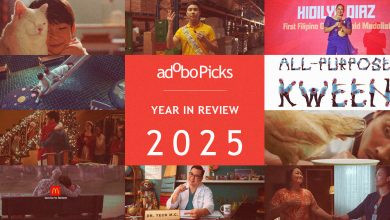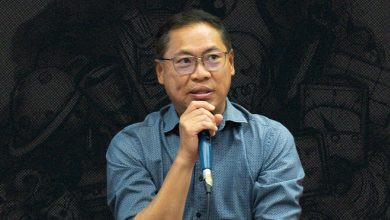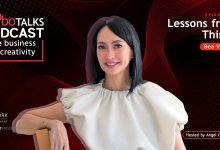By Vasanth Seshadri
A few years ago, Pantene and BBDO did a pathbreaking film in the Philippines called “Labels Against Women.” In it, a professional man and a professional woman are seen in typical workplace situations like leading a meeting, giving a talk on stage, working late hours, and taking care of their looks with the intention of looking professional. The man at the meeting was labelled as Boss whereas the woman at a similar meeting was labelled Bossy. Likewise, on stage, the man was Persuasive whereas the woman was Pushy. The man who worked late hours was Dedicated whereas the woman who did the same was Selfish. The man who takes care of his appearance was Neat whereas the woman who did the same was Vain. The film then offered a rallying cry to women: Don’t Let Labels Hold You Back. Shine Strong.
The film was meant for the Philippine market. But it exploded all over the world with 40 million views. It stuck a chord with women all over the world who had been burdened by unfair labels in one way or another.
This was one of the first major examples of cultural change driven by a brand. It took direct aim at the discomfort many people still face with women in leadership positions. It sought to refresh old thought processes that are simply cultural relics in this day and age. It aimed to remake mindsets and therefore behaviour. It was an act of cultural engineering.
In my new book, Cultural Engineering, I explore how today’s young adults expect brands to demonstrate a value system through not just communication but also sustained actions, and how any brand that does not have a point of view is destined for the waste bin of history. It’s a guide to how brands can turn themselves into catalysts of cultural change and future-proof themselves as young adults vote with their pockets.
Why? Why does a brand have to do this? Why can’t they just dramatize what’s good about their product?
That’s because of a chastening reality that product benefits have become a point of parity. I’ve worked on plenty of skincare brands over the years, and I’ve seen so many of the same benefits keep coming back. I’ve had Nike, Adidas, Reebok and New Balance shoes without any discernible difference among them. I like McDonald’s burgers, Wendy’s burgers and Burger King burgers.
So, what would make me choose one brand over another? When a brand has a point of view that overlaps with my point of view. When a brand becomes a catalyst of positive change. When a brand becomes a force for cultural engineering.
This expectation is driven by two groups of people who have enjoyed increased purchasing power over the past decade: Millennials and Gen Z. I collectively call them young adults in order to not fall for the jargon trap.
Young adults are becoming national leaders. Jacinda Ardern, arguably the best national leader in the world today, is 39. Finland’s Sanna Marin is 34. Austria’s Sebastian Kurz, is 33. At a more grassroots level, Alexandria Ocasio-Cortez was 29 when she took office as Congresswoman for New York’s 14th congressional district in 2018.
Young adults are becoming change agents when it comes to the world’s biggest issues like climate change and gun control, be it Boyan Slat’s Ocean Cleanup Project that’s ridding the ocean of plastic waste as we speak, or Emma Gonzalez’s March for Our Lives movement against gun violence, or footballer Marcus Rashford successfully making the UK government reverse a decision to halt a food voucher program that benefits 1.3 million low-income children.
While they are fully capable of changing the world on their own, young adults are also expecting brands to join them on this journey.
Young adults have started asking brands, where do your raw materials come from? Is your palm oil sourced sustainability? Is your supply chain deforesting virgin rainforest and making orangutans homeless? What’s your stand on feminism? What’s your stand on immigration? What’s your stand on LGBTQ+ issues? What have you done to respond to the twin pandemics of Covid-19 and racism that hit us in 2020?
That’s why we see Burger King tackle homophobia by packaging its Whopper into a rainbow, calling it Proud Whopper, and filming the reactions of customers to create a provocative social experiment. That’s why we see Aeromexico offering discounts to Americans depending on how much Mexican DNA they have. That’s why Nike donated $40 million to social justice organizations that work to empower the Black community. That’s why LVMH turned its perfume factories into hand sanitizer factories in response to Covid-19.
That’s why Safeguard in the Philippines did a heartwarming three-and-a-half-minute film called Pabaon Sa Buhay in which Norman King, the first Aeta graduate at the University of the Philippines, shared with us about all the life lessons he has gained from his mother.
Brands possess an exceptional combination of knowledge, expertise, wealth, influence, and the people’s love. Brands are expected to wield this substantial power to dismantle thought processes that encumber the human race, while instilling progressive thought processes that empower us.
If that feels like a lot of work, well, it is. There’s no short cut to it. Because we are talking about uprooting very firmly entrenched aspects of culture, like the patriarchy, homophobia, traditional expectations of marriage, distrust for immigrants, and so on. Though it takes time to re-engineer such mindsets, any brand that’s in it for the long haul stands to gain enormous brand love as young adults respond to them the way they would respond to a friend.
In Cultural Engineering, I’ve laid out a methodology for identifying and assessing cultural engineering opportunities, addressing those opportunities creatively, and walking the talk with sustained actions that firmly establish the brand as a change agent. I’ve brought this methodology to life using some of the most successful cases of brand-driven cultural change, and introduced some cautionary tales of attempts at cultural change that went wrong. I’ve attempted to inspire brands by painting a picture of what the biggest and best brands are doing to make the world a better place, reminding brands of the immense power they possess to drive human progress.
As marketers look to the future with both excitement and uncertainty, Cultural Engineering aims to shine a light on the road ahead and inspire marketers to embrace their powers with cheer and optimism.
Cultural Engineering is available on Amazon: https://www.amazon.com/dp/B08CXKRPMT








